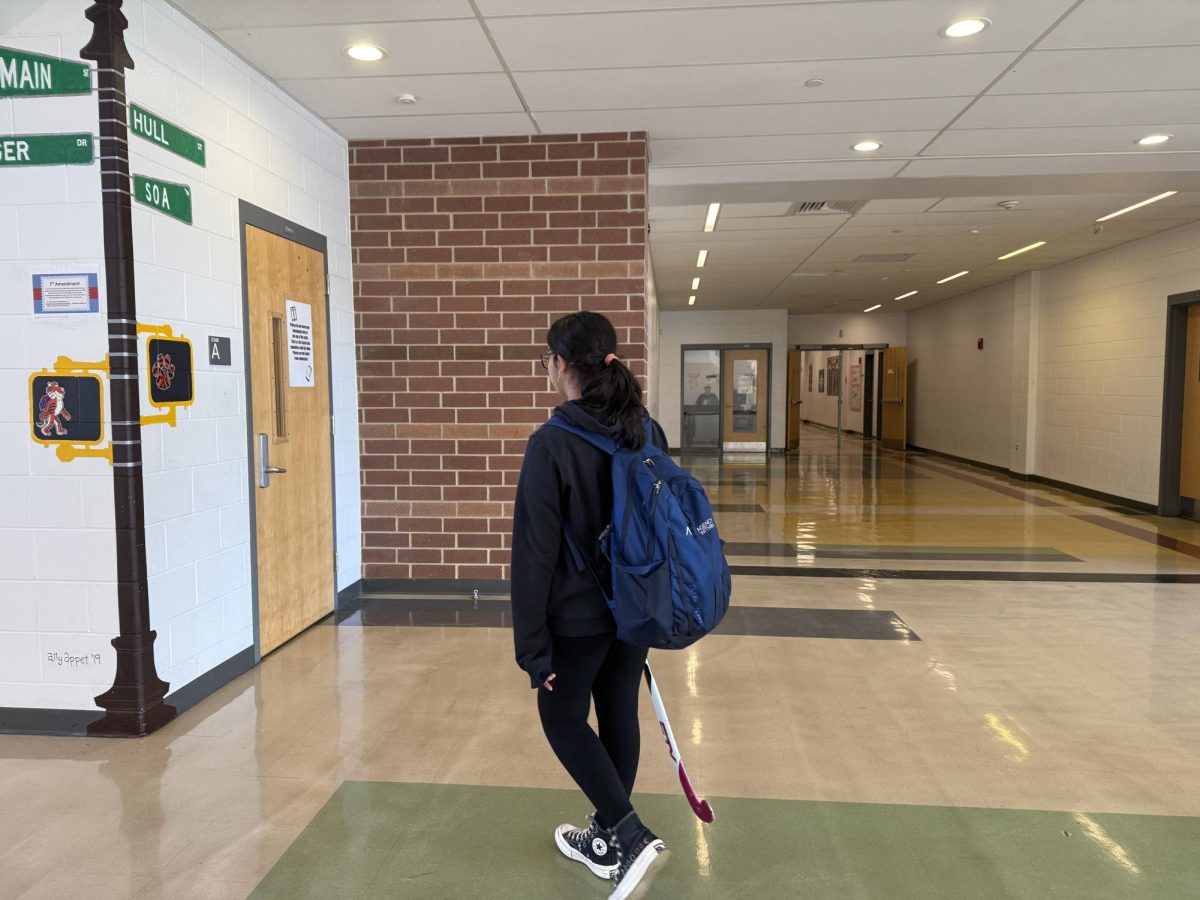The bell rings every morning at 9 a.m., marking the start of the first period. While teachers begin instruction, students are still lingering in the halls or rushing to class. For many students, being on time for school is a struggle. “There’s just so many things that can go wrong on the way to school,” said junior Alex Bourne.
According to Vice Principal Amy Winston, student tardiness continues to be a problem at North, interrupting lessons planned by teachers and distracting students’ learning.
Traffic can be unpredictable in the morning, especially closer to North where there is congestion from the increased amount of cars.
“I’ve been a few minutes late because I got stuck at a stoplight for a while,” said senior Lila Feldman.
The large majority of tardies are in the first period North has been trying to fight tardiness for many years, and new changes have led to increased success.
The main issue is unplanned tardiness. Although the expectation to get to school on time is straightforward, mornings can be unpredictable, and unexpected interferences can appear.
Some students arrive late to North because of planned absences, such as medical or other appointments. This absence is excused and doesn’t lead to a significant impact on classes or consequences.
“Their family can report the tardy to school on the Google Form, and then when the student arrives, they check in with the house office,” said Winston.
For the majority of students, the occasional unplanned tardy is unavoidable. However, repeated tardies cause distractions for students and teachers. When class has already begun, a student entering late disrupts the learning flow.
“I take attendance right away, so I have to change the status of the attendance if I mark someone absent,” said French teacher Isabelle Ronfard. “It’s time-consuming. It’s something that distracts me, and it frustrates me because it’s like work. You have to have a certain discipline.”
Although student tardiness is currently an issue, it has been one for many years. According to Winston, despite what one may expect, the amount of tardies during first period hasn’t drastically changed since implementing a later nine a.m. start time. However, the tardiness to later class blocks has decreased since creating clear attendance expectations and consequences.
“I’m not sure just changing the start time improves the tardiness without changing habits and routines,” added Stauss.
Commitments to athletics can play a role in tardiness, as bringing sports equipment can play an additional factor in being late, according to junior Sophie Kuan.
Accordingly, since the start time change, North has taken additional steps to curb tardiness.
“We definitely have seen an improvement over the last couple of years, as we’ve put in place a tardy policy and been more explicit about it since COVID-19,” said Winston. “Period two all the way to the end of the day, those numbers have gotten a lot better. The one that really hasn’t gotten better has been period one. And so that’s why we’re trying some specific things at the start of the school day,” she added.
According to Winston, new policies are being implemented at North to reduce the number of tardies before intervention by teachers or other staff is necessary.
This year, If the student continues to be late and other support isn’t working, a teacher can enforce non-academic consequences. According to Winston, teachers who hold students firmly accountable face the most success throughout the year.
“We’re going to start doing an all-school detention on Tuesdays during Tiger block. So for students who continue to be tardy, if teachers are struggling with getting a student who’s continuously tardy to class, teachers will be able to assign students to that detention during Tiger block,” said Winston.
Additionally, communication with families is becoming clearer. At 9:30 in the morning, families are notified if a student is marked tardy to first period. Many parents assume that their children are getting to school on time, even when they’re not. The school hopes that students will receive more support from home by communicating regularly with families.
New positions were also added to ensure students get to class on time. While there are already teachers in the building monitoring directed studies and the library, North will now also have a building monitor.
“We have a couple of folks who are doing building monitor duty at around 8:45 in the morning,” said Winston. “Their job is to show kids along to class because one of the things we also see is that kids are here, but then they don’t make time,” she added.
Building monitor is not the first new role North has added to reduce tardiness. Last year was North’s first year of having an attendance interventionist, English teacher Kate Shaughnessy. According to Winston, part of her job is preventing absences and tardies in the building, and being a resource to teachers who need help or ideas.
Over the past three years, North has started implementing a stricter attendance policy to create clear consequences and minimize tardiness. Teachers are expected to record tardies in Aspen as students arrive. They are responsible for holding students accountable for those tardies and
North faculty is working with students to reduce tardiness. According to Ronfard, teachers sit down with students and catch up on work if only a few minutes are missed. However, if implemented methods aren’t working, the teacher takes more steps. Once tardiness becomes a pattern and a student is marked absent more than five times, then parents, counselors, and the dean are involved.
“The first approach is to find out the reason the student is tardy,” said Riley House dean Michelle Stauss. “Is it something out of the student’s control? More often than not, it is something controllable but not necessarily easy to address. It might be really serious habits that the student is having a hard time changing. Other times it might be a different pull that is making the student not able or interested or willing to get to class on time,” she added.










































